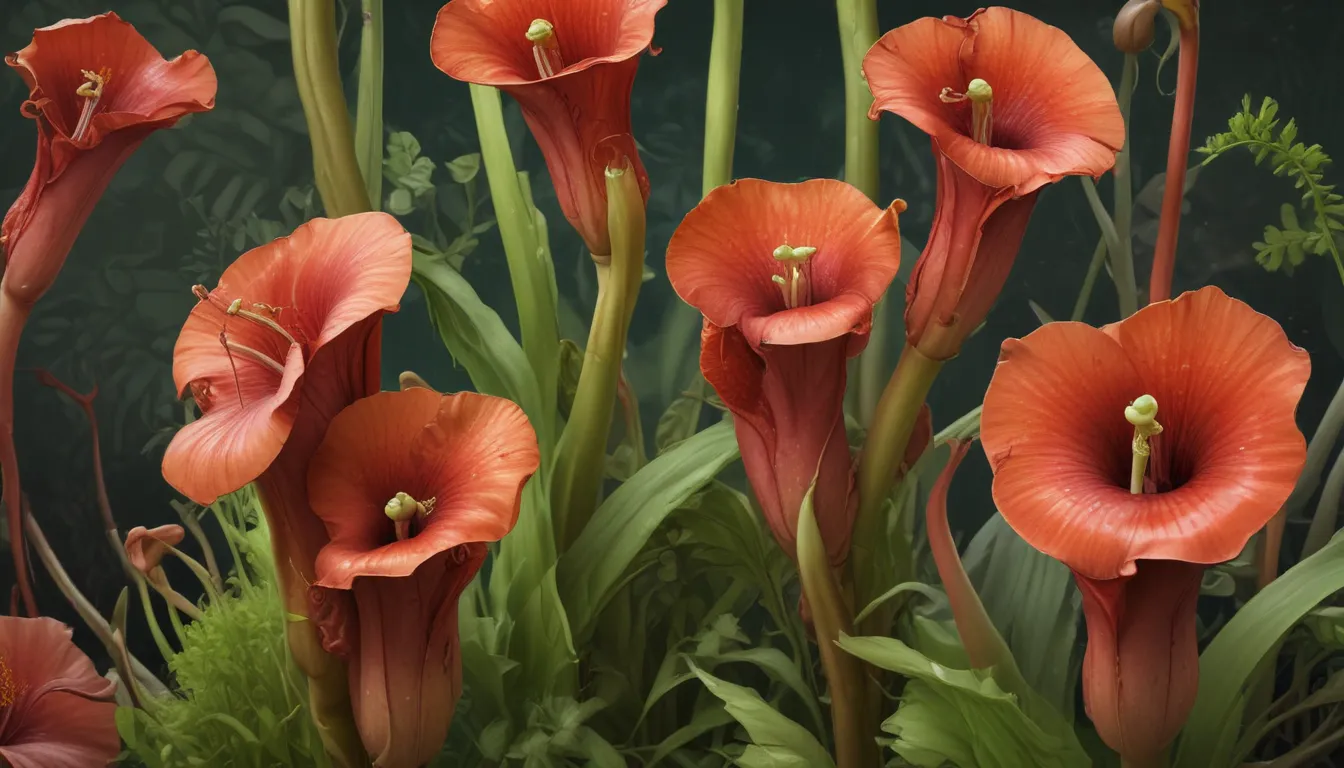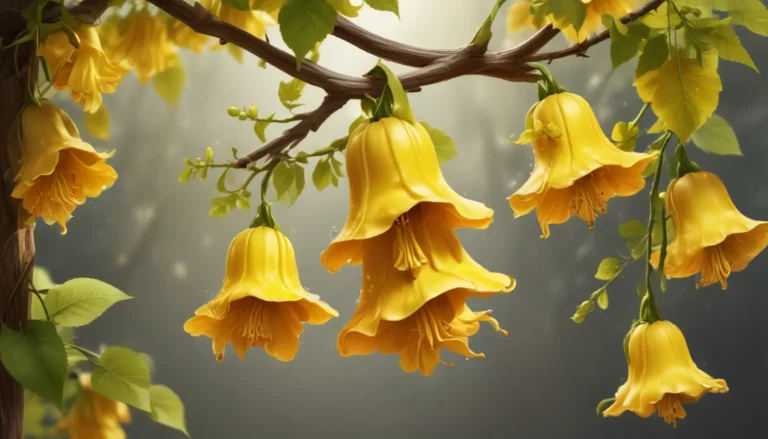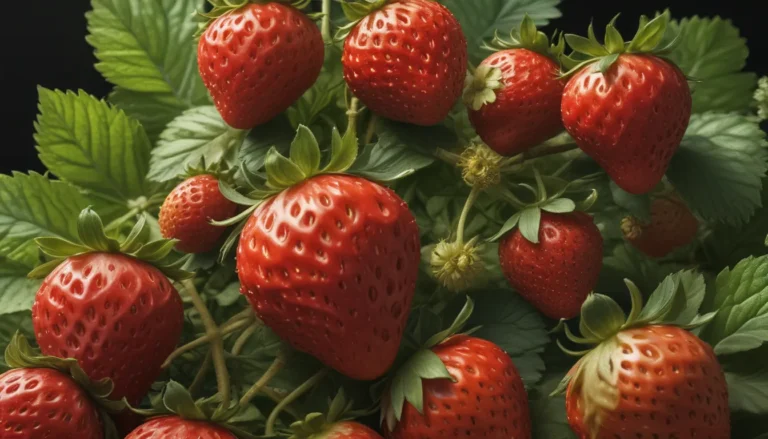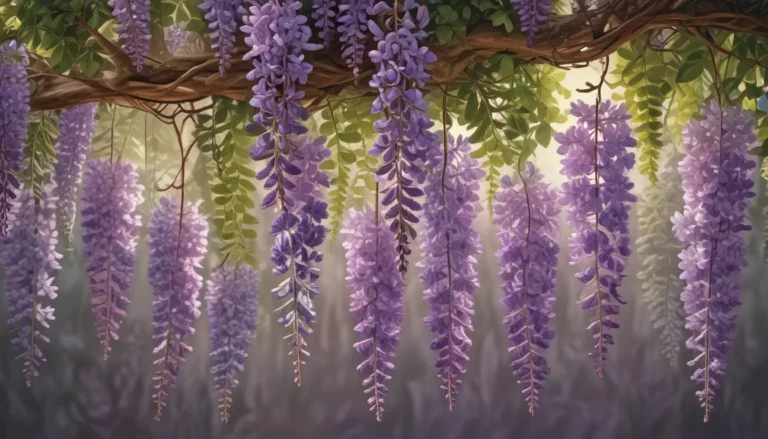The pictures we use in our articles might not show exactly what the words say. We choose these pictures to make you interested in reading more. The pictures work together with the words but don’t take their place. The words still tell you the important facts.
Are you ready to embark on a journey into the captivating world of pitcher plants? These extraordinary carnivorous plants have long been a source of fascination for botanists, nature enthusiasts, and curious minds alike. With their unique trapping mechanisms, diverse species, and remarkable adaptations, pitcher plants offer a glimpse into the wonders of the natural world. Join us as we delve into 20 fascinating facts about these botanical marvels, uncovering the mysteries of their intriguing nature.
Unveiling the Carnivorous Nature of Pitcher Plants
Pitcher plants are carnivorous wonders that have evolved to thrive in environments with nutrient-poor soil. By trapping and digesting insects, these plants obtain vital nutrients that are scarce in their natural habitats. Their predatory nature sets them apart from other plants in the kingdom, showcasing their remarkable adaptations for survival.
The Diverse World of Pitcher Plants
With over 150 different species, pitcher plants come in a stunning array of shapes, sizes, and habitats. From tropical jungles to temperate regions, these fascinating plants can be found in a variety of locations around the world. Each species boasts its own distinct characteristics, adding to the allure and diversity of the pitcher plant family.
The Allure of the Pitcher Shape
Named for their distinctive pitcher-shaped leaves, these plants act as deadly traps for unsuspecting insects. The pitchers come in a wide range of shapes and colors, with some resembling elegant jugs and others resembling intricate works of art. The diversity in pitcher shapes adds to the visual appeal of these captivating plants.
Luring Prey with Attractive Nectar
Pitcher plants produce a sweet nectar that lures insects into their traps. The enticing scent and taste of the nectar lead unsuspecting prey into the pitcher's deadly interior, setting the stage for the plant's unique feeding mechanism.
Trapping Mechanisms: Slippery Slopes and Downward Hairs
The interior of the pitcher plant is lined with downward-pointing hairs and a slippery surface, making it nearly impossible for trapped insects to escape. Once inside the pitcher, the prey is unable to find a foothold and ultimately succumbs to the plant's digestive enzymes. This intricate trapping mechanism ensures the plant's success in capturing and digesting its prey.
Digestive Fluids: Breaking Down Prey for Nutrient Absorption
Upon capturing prey, pitcher plants secrete digestive fluids that break down the insect's exoskeleton and soft tissues. This process allows the plant to absorb vital nutrients, such as nitrogen and phosphorus, which are essential for its growth and survival in nutrient-poor environments.
Adapting to Challenging Environments
Pitcher plants have evolved a range of adaptations to thrive in their challenging habitats. From specialized leaves to intricate trapping mechanisms, these plants have developed unique strategies for survival. Symbiotic relationships with microorganisms further aid in nutrient absorption, showcasing the plant's remarkable adaptability.
Diverse Diet: From Ants to Frogs
The diet of pitcher plants consists primarily of insects, including ants, flies, beetles, and even small frogs in some cases. This diverse array of prey contributes to the plant's ability to obtain essential nutrients from its surroundings, highlighting the plant's role in insect population control.
Thriving in Varied Habitats
Pitcher plants can be found in a wide range of habitats, from marshy bogs and swamps to rocky outcrops and sandy soils. Their ability to thrive in diverse environments showcases their remarkable adaptability and resilience in the face of varying ecological conditions.
Conservation Efforts: Preserving Endangered Species
Several species of pitcher plants are considered endangered due to habitat destruction, overcollection, and other human-related activities. Conservation efforts are crucial to preserving these unique and ecologically valuable plants, ensuring their continued existence in the wild.
Horticultural Delights: Cultivating Pitcher Plants
Pitcher plants have garnered attention from horticulturists and plant enthusiasts worldwide for their captivating appearance and intriguing feeding mechanisms. Many species are cultivated as ornamental plants, adding a touch of exotic beauty to gardens and indoor spaces. The cultivation of pitcher plants offers a rewarding and educational experience for plant enthusiasts.
Ethnobotanical Significance: Traditional Uses and Symbolism
In some cultures, pitcher plants hold ethnobotanical significance and are utilized for medicinal or ritual purposes. These plants have a rich history of traditional uses and spiritual symbolism in certain regions, adding to their cultural importance and significance.
Ecological Importance: Regulating Insect Populations
Pitcher plants play a vital ecological role by contributing to insect population control and nutrient cycling within their ecosystems. Their predatory nature helps regulate insect populations and serves as a crucial component of the local food web, showcasing the plant's ecological significance.
Evolutionary Insights: Unraveling Nature’s Marvels
The evolutionary adaptations of pitcher plants have fascinated scientists and enthusiasts, offering valuable insights into the complex interplay between plants and their environments over millions of years. Studying pitcher plants provides valuable information on adaptation, speciation, and ecological dynamics in the natural world.
Hybrid Varieties: Aesthetically Captivating Cultivars
Hybridization has led to the creation of numerous pitcher plant cultivars with diverse colors, patterns, and sizes. These hybrid varieties captivate collectors and enthusiasts with their aesthetic appeal, adding to the allure and diversity of the pitcher plant family.
Research Significance: Studying Plant-Animal Interactions
Pitcher plants are subjects of extensive scientific research, shedding light on topics such as plant-animal interactions, evolutionary biology, and ecological dynamics. Their unique attributes make them valuable models for studying adaptation and speciation in the natural world, inspiring further research and discoveries.
Global Distribution: Thriving Across Continents
Pitcher plants are distributed across various continents, including Asia, Australia, and the Americas, showcasing their ability to thrive in a wide range of climatic conditions and ecological niches. Their global distribution highlights their adaptability and resilience in varied environments.
Symbiotic Relationships: Nurturing Ecological Balance
Pitcher plants form symbiotic relationships with a variety of organisms, including bacteria, yeasts, and insects. These relationships contribute to the plant's nutrient acquisition and overall ecological balance, showcasing the interconnectedness of species in their habitats.
Cultivating Wonder: A Rewarding Endeavor
Cultivating pitcher plants can be a rewarding endeavor for plant enthusiasts, offering an opportunity to observe their captivating trapping mechanisms and diverse growth habits up close. Whether grown indoors or in gardens, pitcher plants provide an educational and enchanting experience for those who appreciate the wonders of the natural world.
Enigmatic Beauty: Inspiring Awe and Wonder
The enigmatic beauty and captivating allure of pitcher plants continue to captivate individuals worldwide, inspiring a sense of wonder and appreciation for the intricacies of the natural world. Their unique adaptations and striking appearance invite exploration and discovery, making them a source of inspiration for all who encounter them.
In conclusion, pitcher plants stand as remarkable examples of nature's ingenuity, with their diverse adaptations, captivating allure, and ecological significance captivating the curiosity of scientists, horticulturists, and nature enthusiasts worldwide. Whether exploring the depths of tropical jungles or the serene landscapes of temperate regions, pitcher plants offer a glimpse into the remarkable diversity and ingenuity of the plant kingdom. Embark on an exploration of these extraordinary botanical marvels, and discover the wonders of pitcher plants in all their captivating glory.
FAQs: Exploring the World of Pitcher Plants
What are the main types of pitcher plants?
There are several main types of pitcher plants, including the Nepenthes, Sarracenia, and Darlingtonia genera. Each type exhibits unique characteristics and can be found in different regions around the world.
How do pitcher plants capture their prey?
Pitcher plants capture their prey through a combination of enticing nectar, slippery surfaces, and downward-facing hairs that prevent trapped insects from escaping. Once inside the pitcher, the prey is unable to climb out and eventually drowns in the digestive fluid at the bottom of the trap.
Delve deeper into the world of pitcher plants, uncover the significance of World Carnivorous Plant Day, and explore the secrets of cultivating these remarkable plants in your own garden. Pitcher plants offer a world of wonder waiting to be discovered and appreciated for their extraordinary beauty and captivating nature. Join us on a journey of exploration and discovery as we unravel the mysteries of pitcher plants and celebrate the marvels of the natural world.






